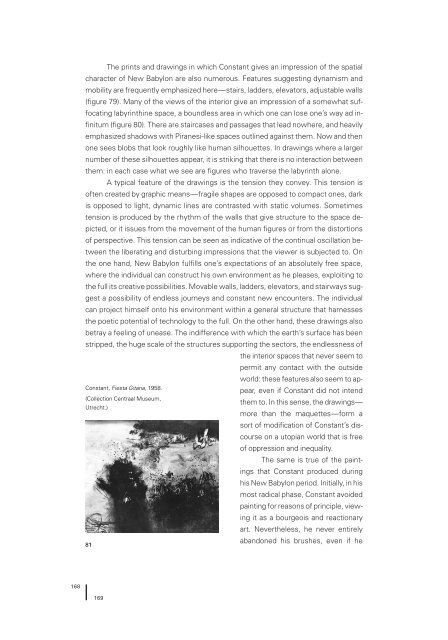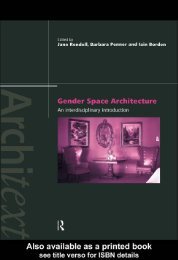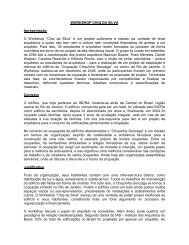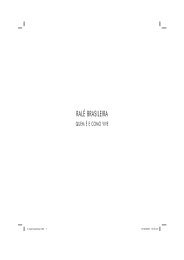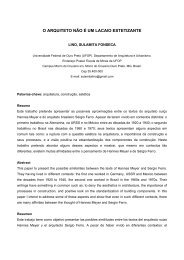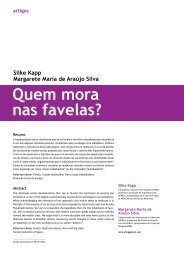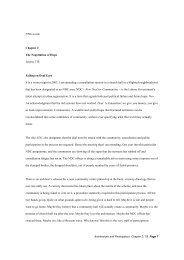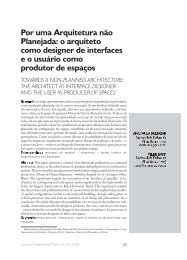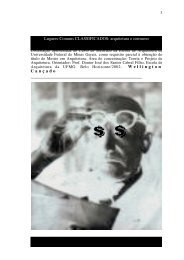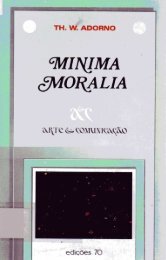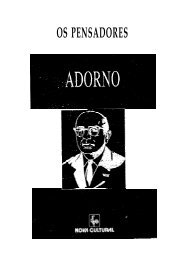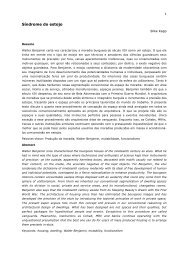Architecture and Modernity : A Critique
Architecture and Modernity : A Critique
Architecture and Modernity : A Critique
Create successful ePaper yourself
Turn your PDF publications into a flip-book with our unique Google optimized e-Paper software.
168<br />
169<br />
The prints <strong>and</strong> drawings in which Constant gives an impression of the spatial<br />
character of New Babylon are also numerous. Features suggesting dynamism <strong>and</strong><br />
mobility are frequently emphasized here—stairs, ladders, elevators, adjustable walls<br />
(figure 79). Many of the views of the interior give an impression of a somewhat suffocating<br />
labyrinthine space, a boundless area in which one can lose one’s way ad infinitum<br />
(figure 80). There are staircases <strong>and</strong> passages that lead nowhere, <strong>and</strong> heavily<br />
emphasized shadows with Piranesi-like spaces outlined against them. Now <strong>and</strong> then<br />
one sees blobs that look roughly like human silhouettes. In drawings where a larger<br />
number of these silhouettes appear, it is striking that there is no interaction between<br />
them: in each case what we see are figures who traverse the labyrinth alone.<br />
A typical feature of the drawings is the tension they convey. This tension is<br />
often created by graphic means—fragile shapes are opposed to compact ones, dark<br />
is opposed to light, dynamic lines are contrasted with static volumes. Sometimes<br />
tension is produced by the rhythm of the walls that give structure to the space depicted,<br />
or it issues from the movement of the human figures or from the distortions<br />
of perspective. This tension can be seen as indicative of the continual oscillation between<br />
the liberating <strong>and</strong> disturbing impressions that the viewer is subjected to. On<br />
the one h<strong>and</strong>, New Babylon fulfills one’s expectations of an absolutely free space,<br />
where the individual can construct his own environment as he pleases, exploiting to<br />
the full its creative possibilities. Movable walls, ladders, elevators, <strong>and</strong> stairways suggest<br />
a possibility of endless journeys <strong>and</strong> constant new encounters. The individual<br />
can project himself onto his environment within a general structure that harnesses<br />
the poetic potential of technology to the full. On the other h<strong>and</strong>, these drawings also<br />
betray a feeling of unease. The indifference with which the earth’s surface has been<br />
stripped, the huge scale of the structures supporting the sectors, the endlessness of<br />
the interior spaces that never seem to<br />
permit any contact with the outside<br />
world: these features also seem to ap-<br />
Constant, Fiesta Gitana, 1958.<br />
pear, even if Constant did not intend<br />
(Collection Centraal Museum,<br />
them to. In this sense, the drawings—<br />
Utrecht.)<br />
more than the maquettes—form a<br />
sort of modification of Constant’s discourse<br />
on a utopian world that is free<br />
of oppression <strong>and</strong> inequality.<br />
The same is true of the paintings<br />
that Constant produced during<br />
his New Babylon period. Initially, in his<br />
most radical phase, Constant avoided<br />
painting for reasons of principle, viewing<br />
it as a bourgeois <strong>and</strong> reactionary<br />
art. Nevertheless, he never entirely<br />
ab<strong>and</strong>oned his brushes, even if he<br />
81


